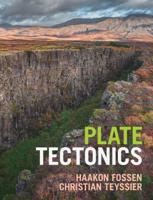Publisher's Synopsis
Mylonites form in response to high rates of strain within deep ductile shear zones, which are the extensions at depth of surface faults, thrusts and fault breccias, They can have many different mineralogical compositions and are therefore defined on their textural appearance. This atlas provides high definition images of a large number of different mylonites allowing students and geologists to correctly classify them with greater ease. It also provides insights into the interpretation of mylonitic fabrics to answer questions such as; from what type of rock did this mylonite derive? What were the metamorphic circumstances during mylonitization? What was the intensity of deformation?, and What was the sense of shear?
This book will complement the very successful textbook "Microtectonics" by Passchier and Trouw.










